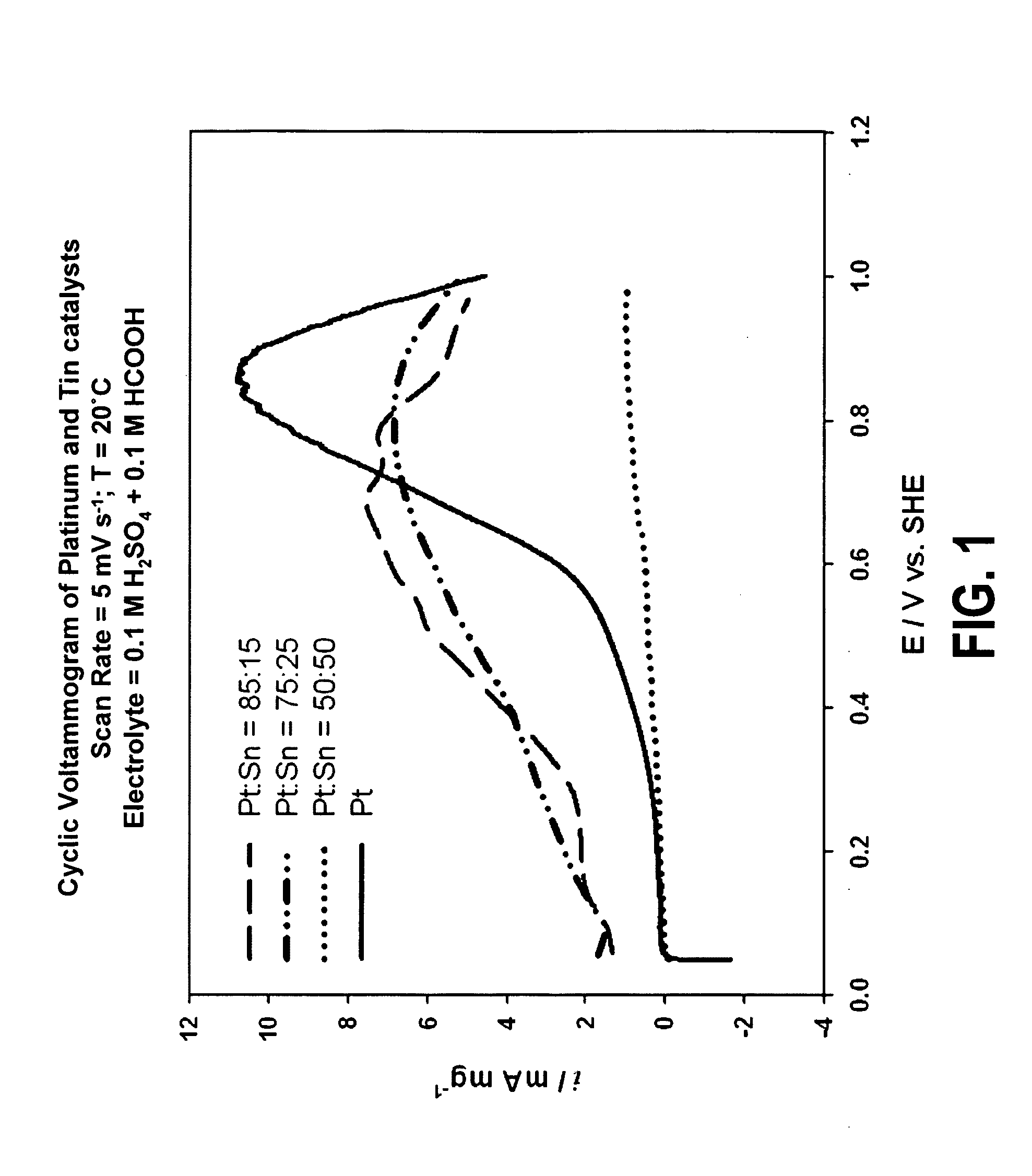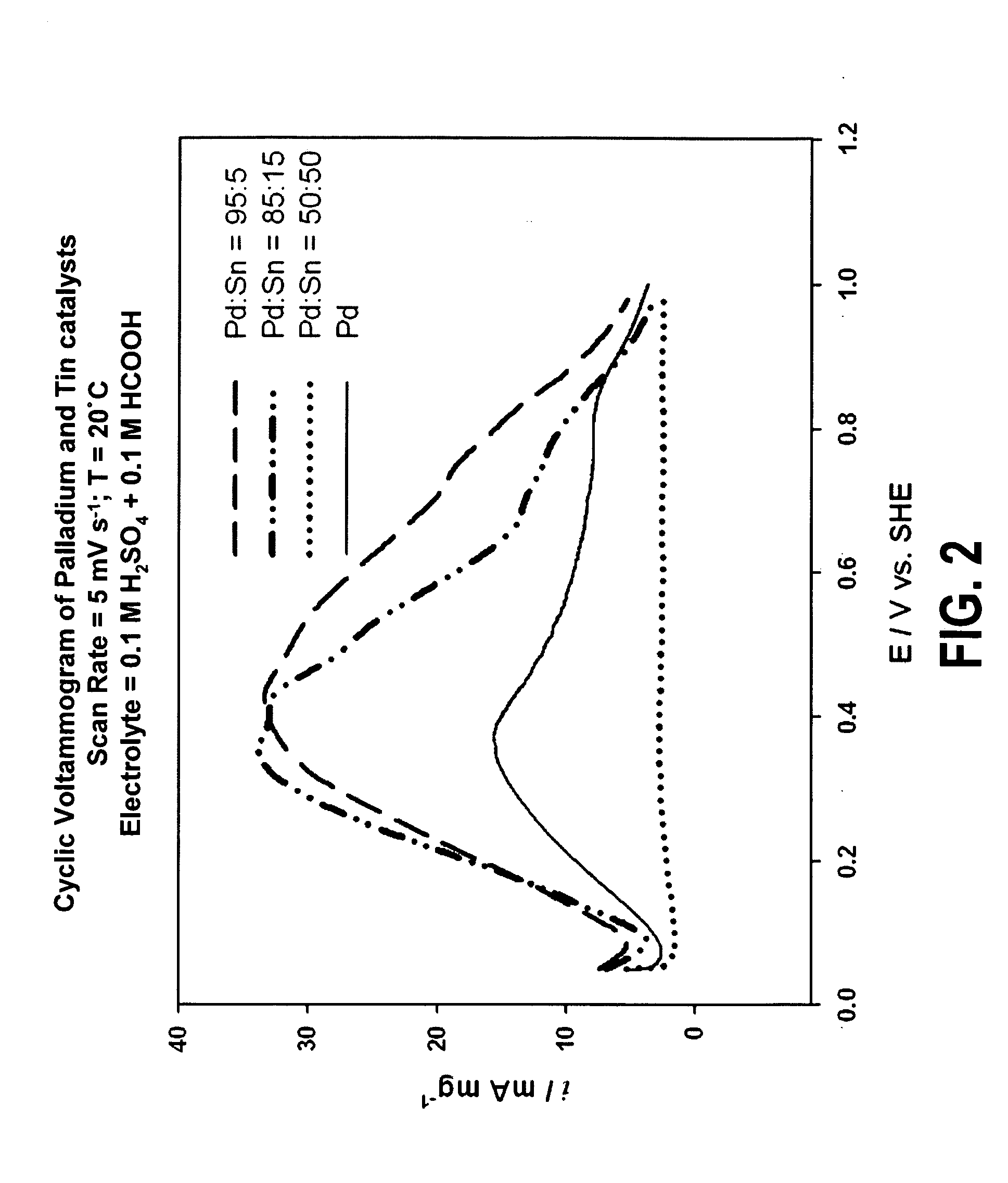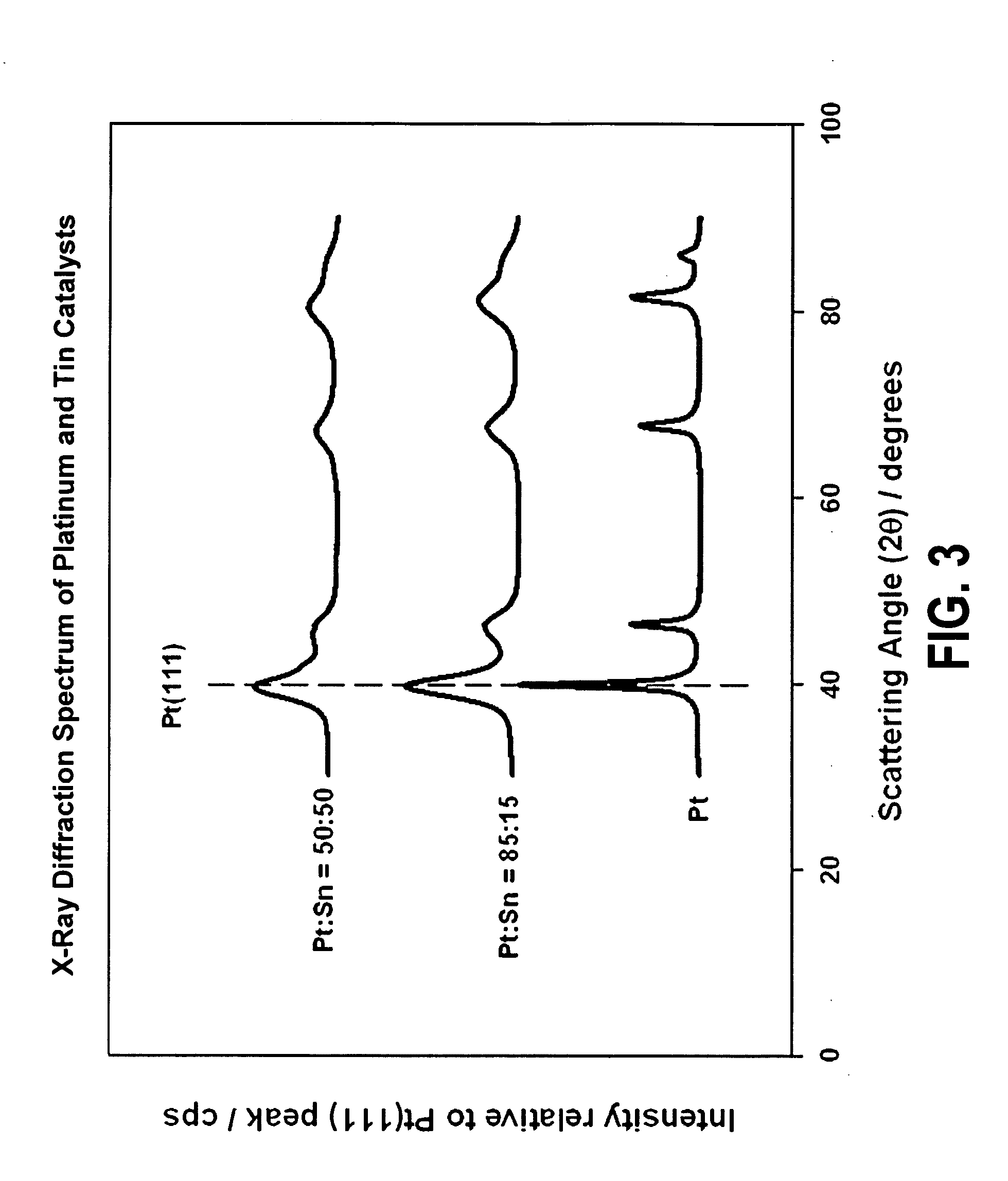Electrochemical oxidation of formic acid using a noble metal based catalyst with admetals
a noble metal and catalyst technology, applied in metal/metal-oxide/metal-hydroxide catalysts, electrical equipment, fuel cells, etc., can solve the problems of limited stability of decorated structures and less desirable pure alloys, and achieve better long-term stability, limited stability, and high activity
- Summary
- Abstract
- Description
- Claims
- Application Information
AI Technical Summary
Benefits of technology
Problems solved by technology
Method used
Image
Examples
Embodiment Construction
)
[0041]A catalyst formulation is provided as a catalyst for organic liquid feed fuel cells where the catalyst formulation reduces catalyst poisoning and exhaustion of the fuel cell while maintaining catalyst stability and activity. These catalysts are also suitable for employment in an acidic environment, such as with fuels like formic acid.
[0042]Fuel cells generally have an anode and a cathode disposed on either side of an electrolyte. The anode and cathode generally comprise an electrocatalyst, such as platinum, palladium, platinum-ruthenium alloys, or other noble metals or metal alloys. The electrolyte usually comprises a proton exchange membrane (PEM), typically a perfluorosulfonic acid polymer membrane, of which Nafion® is a commercial brand. At the anode, fuel is oxidized at the electrocatalyst to produce protons and electrons. The protons migrate through the proton exchange membrane to the cathode. At the cathode, the oxidant reacts with the protons. The electrons travel from...
PUM
| Property | Measurement | Unit |
|---|---|---|
| electrically conductive | aaaaa | aaaaa |
| electronic structure | aaaaa | aaaaa |
| electrical energy | aaaaa | aaaaa |
Abstract
Description
Claims
Application Information
 Login to View More
Login to View More - R&D
- Intellectual Property
- Life Sciences
- Materials
- Tech Scout
- Unparalleled Data Quality
- Higher Quality Content
- 60% Fewer Hallucinations
Browse by: Latest US Patents, China's latest patents, Technical Efficacy Thesaurus, Application Domain, Technology Topic, Popular Technical Reports.
© 2025 PatSnap. All rights reserved.Legal|Privacy policy|Modern Slavery Act Transparency Statement|Sitemap|About US| Contact US: help@patsnap.com



